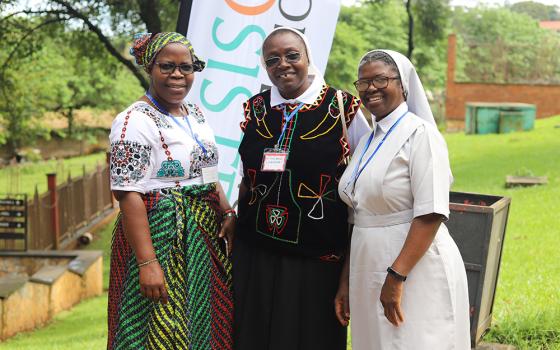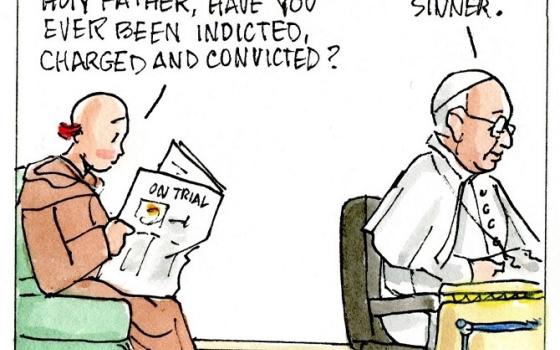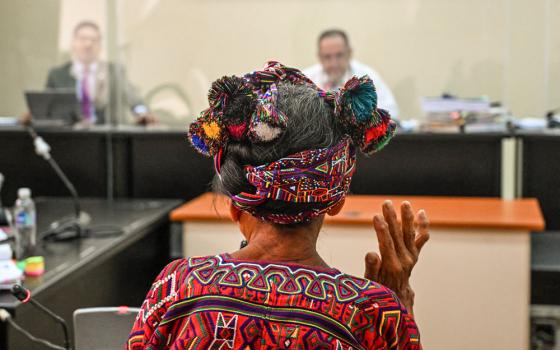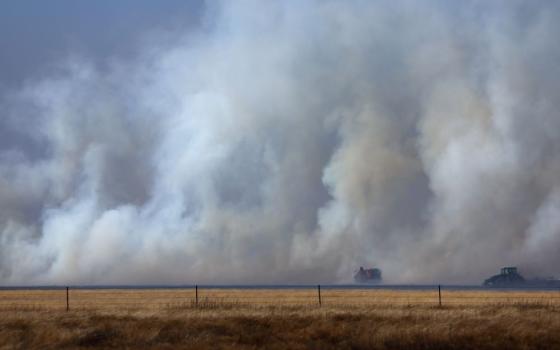Libertad Infante has been hosting Roman Catholic services in the patio of her middle class home for 20 years.
At first they stirred interest from state security agents who showed up with inquiries, she said, especially after a crowd of pilgrims once carried a large cross through her neighborhood in eastern Havana.
Now, as Pope Francis is due for a three-night visit starting on Saturday, the celebrations of Mass on the patio are innocuously routine and may soon no longer be needed.
Construction is under way on a new church in the neighborhood, on a half-hectare (1.2-acre) plot of land book-ended by two giant, Soviet-era apartment blocks.
The church will be named after Pope John Paul II, whose historic 1998 visit to Cuba helped eliminate some of the final barriers to religious freedom in Communist-run Cuba.
Catholicism is flourishing again in the former Spanish colony, gradually expanding its role and influence after suffering repression for decades following Fidel Castro’s 1959 revolution. It now has more autonomy than any organization outside the auspices of the Communist Party.
Cuba, which was officially atheist for decades, is allowing each of the country’s 11 dioceses to build one new church for the first time since 1959.
“There’s no going back,” said Infante, who started attending Mass only when her late mother brought the services into their home in the 1990s. “People are not afraid.”
The church still faces numerous challenges, notably low attendance, a lack of interest among youth and competition from Afro-Cuban religions that accept widely varying degrees of Catholic dogma. There is also political tension with dissidents who complain the church is more interested in courting influence with the government than demanding democratic reforms.
But the church is more influential than it has been in decades. It says it has no specific agenda or demands of the government beyond pushing for more space for what it is already doing: evangelizing, educating, and ministering to the sick, the elderly and the poor.
“The church just needs to be left alone do to its work, predicated on evangelism,” said Alfredo Petit, the auxiliary bishop of Havana who as a young priest in 1966 and 1967 was held at a government labor camp for 10 months, one way religion was repressed in the early years of Communist rule.
The Conference of Catholic Bishops of Cuba estimates 60 percent of Cuba’s 11 million people are baptized but only 3 percent to 5 percent attend Mass.
The Cuba that Francis will see is much more accepting of religion than the one John Paul II discovered on his 1998 visit.
Although the Polish-born pope was famously anti-communist, he displayed a non-threatening moderation in Cuba and was also critical of longstanding U.S. efforts to isolate the island. Then-President Fidel Castro basked in the attention.
“May Cuba, with all its magnificent potential, open itself up to the world, and may the world open itself up to Cuba,” John Paul said, in what turned out to be a prophetic urging.
That two-way opening has developed and led to detente between Cuba and the United States after more than five decades of hostility. The two countries restored diplomatic ties in July after cutting a deal that Francis himself helped broker.
Catholicism, once cautiously practiced by the devout few, is now observed openly and without repercussion.
The church is educating thousands of Cubans, from preschoolers to university students, in a country where officially the state has a monopoly on education.
“The government was not favorable at first, but it has slowly become tolerant as it has seen the results,” said Teresa Vaz, director of the Sisters for the Love of God preschool in Havana, which teaches about 160 children aged 2 to 4.
An enormous poster of Jesus was recently hung on the facade of the national library in Havana’s Revolution Square, where the pope will celebrate Mass on Sunday, next to similarly large images of revolutionary heroes Che Guevara and Camilo Cienfuegos that are permanently fixed to government buildings.
In a state television interview with Cuban Cardinal Jaime Ortega, interviewer Amaury Perez began the show by kneeling before the cardinal and kissing his ring, an astonishing show of reverence given the country’s recent past.
When Ortega negotiated the release of 126 political prisoners with current President Raul Castro in 2010 and 2011, he achieved unprecedented influence for a non-Communist in revolutionary Cuba.
At the Church’s urging, Cuba released 3,522 common prisoners ahead of Francis’ visit, surpassing the 2,900 freed for Pope Benedict XVI in 2012 and the 300 for John Paul in 1998.
Still, the new churches under construction reveal the limits of progress. Construction continues, but it is slow and dependent on outside funding.
One, on the western end of Cuba in the city of Sandino, is sponsored by a U.S. parish. It is little more than a cornerstone and a few posts.
A parish in Italy is helping finance the John Paul Church in Havana, which for now is just a half-built pantry attached to the frame of a dining room.
Cuba’s government donated the land as well as porticos recovered from the temporary shrine where Benedict XVI celebrated Mass during his visit in 2012. Otherwise, church officials must scramble like anyone else in Cuba to track down scarce building materials.
And while the church is alone outside the Communist Party structure in being able to run small publications, it is shut out of television or radio.
“Small concessions don’t mean we have a healthy secularity,” said Victor Filella, a Spanish priest who has worked in Cuba for four years. “It’s a testament that the church has not been extinguished but rather has resisted and is gaining ground as the pressure has decreased.”



